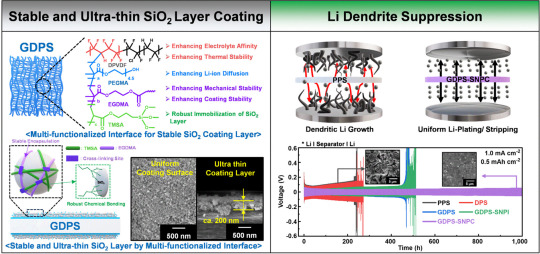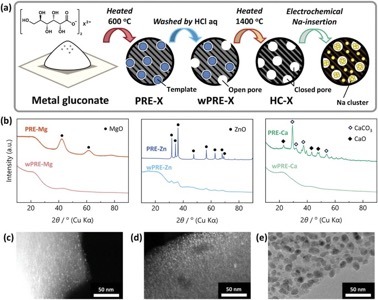Using technology to build a zero carbon economy. Images that I did not create are credited via link to the original source, if known, or to the place where I found it, if not. To request removal of an image, email info AT tocarbonzero DOT com with a link to the item and some way to verify your copyright claim. Mastodon
Don't wanna be here? Send us removal request.
Text
Good article from MIT putting some solid numbers on the environmental impact of ChatGPT and its relatives. This article is for a general audience; people interested in the technical details can find them at https://mit-genai.pubpub.org/pub/8ulgrckc/release/2
0 notes
Text
“It is clear that the biggest mine of the future has to be the car that we already built,” Mercedes-Benz Group Chairman Ola Källenius said at a 2021 climate summit.
In Ghana, more than 90% of e-waste is recycled. In Europe, only about a third.
0 notes
Text
https://www.seattletimes.com/seattle-news/climate-lab/bomb-cyclone-shows-cracks-in-was-electrical-grid/
The Seattle Times asked the same questions I did, about grid resilience in the face of more powerful storms. It's a sign of the difficulty of the problem that potential solutions were consigned to a short paragraph at the end.
0 notes
Text
Freezing in the dark
There's nothing like a power outage to make you appreciate fossil fuels. The Pacific Northwest encountered a bomb cyclone this week, smashing a lot of trees and leaving hundreds of thousands of people without power for multiple days. Including me. The experience was made a lot more bearable by a gas stove, gas fireplace, and gas hot water heater. (And also a gas-powered vehicle.)
And that's a problem for electrification. We haven't had a major outage in more than nine years, but this reminder that it *could* happen will definitely figure into our thinking, and probably our neighbors' as well.
Then you consider the added pressure that mass electrification will put on the grid, and the likelihood that climate change will make storms worse.
This is one of the scenarios planners consider when they talk about grid resilience, and all of the solutions are enormously expensive. Burying transmission lines, including the high voltage lines from the dams and wind farms where the power is generated? Localized generation and/or battery backup centers? Billions, probably trillions of dollars on top of the costs of electrification itself.
I don't have an answer. But dismissing concerns about grid resilience as scaremongering by climate skeptics (even though some of it definitely is) isn't the answer either.
0 notes
Text
https://www.seattletimes.com/seattle-news/climate-lab/the-power-of-a-logjam-a-vision-of-the-northwests-rivers-of-old/
Real rivers are messy.
0 notes
Text
https://www.anthropocenemagazine.org/2024/04/how-the-technology-in-reflective-signs-can-help-cool-cities/
From the every little bit helps department. While green spaces are a large scale answer to the urban heat island effect, dense buildings and parking lots are likely to be with us for a while. Retroreflectors -- the same materials used in highway signs -- can help by bouncing sunlight back into the sky, rather than to potentially absorbing surfaces.
0 notes
Text

The separator between the anode and cathode of a lithium-ion battery poses a major engineering challenge. Separator failure leads to an internal short circuit, with potentially catastrophic results. But simply increasing the separator thickness reduces battery capacity and can impede the flow of ions that the battery needs to function. A group of Korean researchers thinks they've made progress, with a thin SiO2 coating for a polymer separator.
0 notes
Text
Thin film solar, again, maybe.
On paper, thin film solar cells look like a promising alternative to CZ-grown bulk cells, with much less silicon waste. In practice, it turns out that the energy cost of thin film growth is also quite large and it's hard to match CZ-silicon's cell quality. The latest assault on this particular windmill comes from NexWafe, whose process involves epitaxial growth on a seed wafer. They're still in the process of scaling up, with facilities investments in both Germany and the US.
0 notes
Text
The reporting on this update says that plug-in hybrids had a tremendous spike in sales in February. Actually looking at the data, though, battery electric vehicles have about 80% of the plug-in vehicle market, with plug-in hybrids accounting for the rest. Plug-in vehicle sales -- battery and hybrid combined -- do appear to have surpassed hybrids without plugs. There's still a long way to go, though, with plug-ins of all kinds accounting for less than 10% of the US market in 2023.
0 notes
Text

Hydrogen is often mentioned as an ideal alternative fuel. Better energy density than batteries, and the combustion product is water. Unfortunately, most commercial hydrogen comes from natural gas because water splitting is a slow, energy-intensive reaction. A group at Dongguk University hopes to change that, with a more efficient catalyst based on molybdenum and ruthenium. Full technical details here.
0 notes
Text

I'm working on a longer piece about perovskite solar cells, but one of the key obstacles to their commercial success is the presence of lead. Researchers at Pusan National University think they've found a passivation solution to prevent lead leakage. Technical details here.
0 notes
Text
It's not just carbon. From MIT Press, an overview of the environmental impacts -- energy use, cooling water, noise pollution, electronic waste -- of cloud computation. https://thereader.mitpress.mit.edu/the-staggering-ecological-impacts-of-computation-and-the-cloud/
0 notes
Text
Scientists at the University of Western Australia have used the strontium/calcium ratio in sea sponge skeletons to track average global temperatures over the last couple of centuries. The results are ... not good. They think we've already passed the 2-degree threshold for serious climate impacts.
0 notes
Text
https://wapo.st/3SmzQHM
I wrote about the hybrid/gas/electric tradeoff a while back. The technology is changing, though. This analysis from the Washington Post suggests that electrics are a better deal for most commuters, especially those with ready access to charging.
0 notes
Text
Hard carbon for high capacity sodium batteries
As electronic devices, batteries are fairly simple. Charge is stored through the accumulation of ions at one electrode, and released to the circuit through the movement of ions to the other electrode. Because ions have mass and take up space, however, optimizing battery structures can involve complex materials engineering challenges. As Daisuke Igarashi and colleagues at Tokyo University of Science explained in an article in Advanced Energy Materials, replacing lithium ion batteries with batteries based on sodium ions can potentially reduce costs and lay a more sustainable foundation for battery-driven devices. Sodium is not a drop-in replacement for lithium, though. It is heavier, reducing the available capacity per kilogram. Sodium batteries also operate at a lower voltage because the Na+/Na potential is higher than that of Li+/Li.
One way to increase battery capacity is to reduce the fraction of non-ionic components in the electrode. In lithium batteries, carbon facilitates the transport of charge from the lithium ions to the circuit. Reducing the volume of carbon by intercalating ions between thin graphite sheets can squeeze more charge-carrying particles into the same overall volume.
In sodium batteries, though, unstable sodium-graphite intercalation compounds can form. Instead of graphite, the Tokyo University group turned to porous hard carbon electrodes. Hard carbon is a low crystallinity carbon structure in which pores separate pseudo-graphitic domains. While the exact mechanism by which sodium ions insert themselves into these pores is still being studied, they seem to first adsorb on defect sites, then intercalate into the graphitic domains, and finally form small clusters in the internal pores. To enhance charge capacity, then, manufacturers seek to optimize the pore structure.
One possible solution relies on metallic gluconate to form a template structure. First, pyrolysis of Mg, Zn, or Ca gluconate embeds metal oxide particles in a carbon matrix. Acid leaches the metallic components away, leaving pores. Finally, heating in an inert atmosphere reduces any residual oxygen and volatilizes elemental metal, leaving porous hard carbon behind.

a) Illustration of template synthesis method. b) XRD patterns of PRE‐X and wPRE‐X, where X = Mg (left), Zn (middle), or Ca (right). Dark‐field TEM images of c) PRE‐Mg, and d) PRE‐Zn, in which MgO and ZnO are indicated as bright spots. e) Bright‐field TEM images of PRE‐Ca. Image source: https://onlinelibrary.wiley.com/doi/10.1002/aenm.202302647
Pyrolysis behavior is complex; differences in the pyrolysis behavior of Ca, Zn, and Mg gluconate lead to differences in the resulting pore size. Of the three, Zn Glu gave the best overall performance. With an energy density of 312 W-h/kg, sodium cells based on the ZnO template approached the lithium state of the art.
As the battery market grows, the relative scarcity of lithium is a strategic issue for rapidly electrifying economies and the companies that serve them. The emergence of competing batteries based on more abundant elements like sodium can help reinforce the trend to electrification.
0 notes
Text
Domain adventures
The tocarbonzero.com domain is changing DNS providers, and also doing some improved forwarding behind the scenes. If something seems broken, message me here.
0 notes
Text
Update 28 March 2023
As more wind and solar resources are added to the grid, their variable and non-dispatchable nature becomes more of a challenge. Fervo, a geothermal energy startup, is trying to prove that their facilities can serve as giant batteries, supplying more or less electricity as needed to fill in the gaps.
I wrote about this a while back, and am happy to see the mainstream media tackle bad faith misinformation about electric vehicles. Even considering the emissions attributable to battery manufacturing, even assuming that an EV is connected to a coal-powered grid, it takes less than two years for an EV to achieve emission parity with a comparable gas vehicle. Motor Trend has a reader-friendly explanation, Nature Communications has the technical details.
Toppan is one of those companies that’s largely invisible to consumers, but a critical supplier in many industries. They make materials for consumer packaging, films for electronics applications, and lots of other things. Many of their products are specialized plastics, laminates of plastic combined with something else, plastic films coated with metal, and so on. So their introduction of carbon pricing as an internal sustainability metric is a big deal. It helps to hold individual business units accountable for their emissions.
0 notes